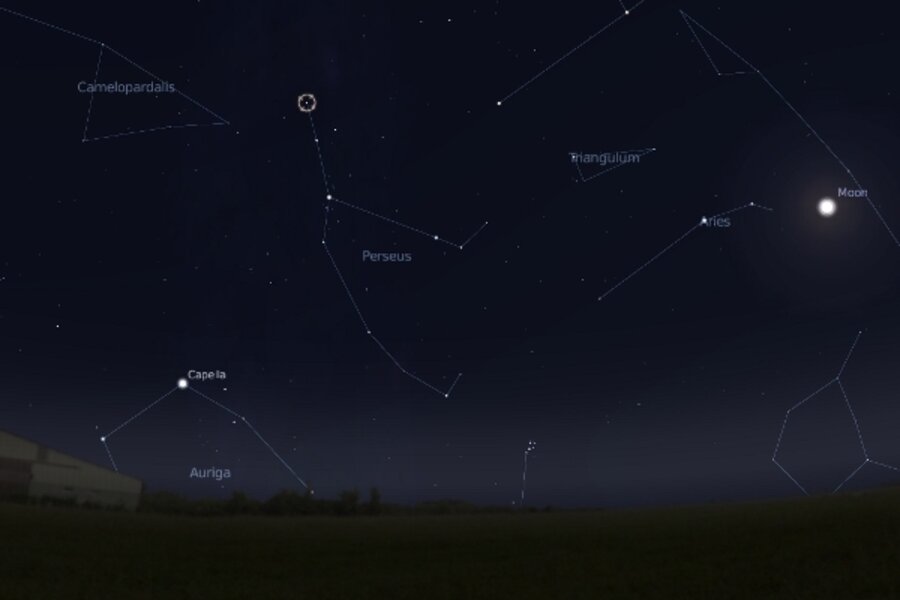Get ready for the Perseids, a summer shower of a different sort
Loading...
If you haven't done so already, mark your sky-watcher calendar for the morning of Wednesday, Aug. 12 -- just after midnight to dawn. The Perseid meteor shower is back. And it peaks during the wee hours Wednesday morning.
The meteors making up the shower are, in effect, the exhaust plume from comet 109/Swift-Tuttle. As the comet enters the inner solar system and makes its swing around the sun, it heats up, its ice pockets turn from solid to gas (do not pass liquid), and they spew dust and rock chunks that loosen as the ice sublimates. Long after it exits the inner solar system, its debris trail remains for Earth to pass through.
The folks over at the University of Texas's McDonald Observatory have some great advice for watching the display. To save you a mouse click, here's the short list:
• If you can, drive to a (safe) dark spot outside your city or town to reduce light pollution (get there early enough to allow your eyes to adjust to the dark).
• Make sure you have a low horizon to the northeast. This is where the constellation Perseus will rise (see the sky chart at the top of the page.)
• Either lay on a blanket or a chaise lounge you've bright just for this purpose (you plan-ahead person, you) and position yourself so the horizon is just within your peripheral vision. Since Perseus moves across the night sky, be ready to tweak your viewing position as it does so.
• As the folks at the observatory say: "Treat meteor watching like you would the 4th of July fireworks. Pack comfortable chairs, bug spray, food and drinks, blankets, plus a red-filtered flashlight for reading maps and charts without ruining your night vision. Binoculars are not necessary. Your eyes will do just fine."
If you need a quick red filter for your flashlight, try picking up a tail-light repair kit from your local auto-parts store. The red plastic works well and is fairly easy to cut.
By some estimates, the shower's peak could generate up to 100 meteors an hour. But for sky-watchers, your number may vary; a lot depends on how dark your skies are. And the sky also will host a waning-gibbous moon. But hey, that's part of the allure: You never quite know what you'll get.
Astronomers Lewis Swift and Horace Tuttle independently discovered Swift-Tuttle in 1862, within days of each other. The comet swings around the sun once every 133.28 years. Its last visit took place in 1992. It will be back in 2126. It should be a spectacular apparition when it comes. Astronomers at NASA's Jet Propulsion Laboratory calculate that it will pass by Earth at a distance of only 14 million miles.
For now, however, we have to content ourselves with the crumbs from the comet's table.
Oh, yes, and while it's fun heading out into the night to observe the shower, not everyone can. So for the stay-at-homes, here's a way to use your hi-fi's FM radio to "observe" the event. And you thought you didn't qualify as a radio astronomer!
[Editor's note: The original version of this story misstated the day of the week of the Perseid meteor shower. It will hit on the morning of Wednesday, Aug. 12. Thanks, Bobby.]





